Posts Tagged ‘IT’
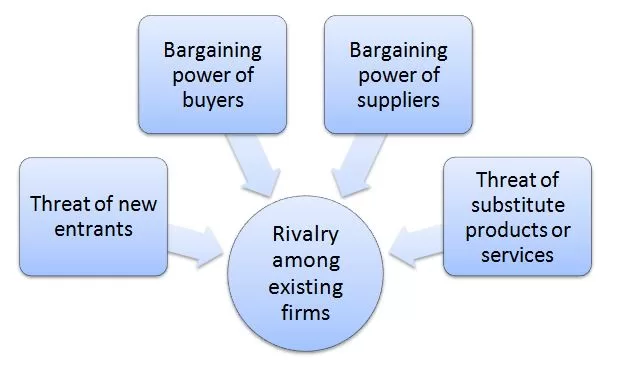
Porter’s Five Forces analytical framework developed by Michael Porter (1979)[1] represents five individual forces that shape an overall extent of competition in the industry. WeWork Porter’s Five Forces is illustrated in figure below: Porter’s Five Forces Threat of new entrants in WeWork Porter’s Five Forces Analysis Threat of new entrants into the flexible workspace industry is significant. The following are the major factors that affect the threat of new entrants into the flexible workspace industry. 1. Time of entry. Increasing numbers of start-ups and solopreneurs are increasing demand for flexible workspace. Furthermore, COVID-19 pandemic has proved the inefficiency of committing to long-term traditional real estate lease agreements for many businesses. Instead, companies of all sizes increasingly prefer to flexible workspace to accommodate their changing needs for desks throughout the year. This tendency may motivate new players to enter the industry. 2. Massive capital requirements. Leasing real estate and furnishing them into creative open space is expensive. Investors may not be keen to finance such business proposals due to low profit margins and long payback periods of their investment. Massive capital requirement is a serious barrier for new entrants. WeWork’s co-founder and former CEO Adam Neumann was able to raise billions of dollars for the business by positioning the company as an internet technology company, rather than real estate company it is. 3. Lack of technological barrier. Unlike technological and manufacturing businesses there are no know-how barriers to enter the flexible workspace industry. There is no secret formula or advanced software a company needs to develop to enter the industry. Massive capital requirement is the only barrier and the absence of other barriers may attract new players into the industry. Bargaining power of buyers in WeWork Porter’s Five Forces Analysis The bargaining power of buyers in flexible workspace sector…

WeWork marketing communication mix comprises communication channels to communicate the marketing message to the target customer segment. These channels are print and media advertising, sales promotions, events and experiences, public relations and direct marketing. WeWork Print and Media Advertising The global flexible workspace provider uses print and media advertising extensively. The company uses TV, radio, magazines, newspapers, billboards and posters to convey their markeing message to potential customers. Specifically, WeWork print and media advertisements aim to encourage entrepreneurs and business owners to re-image their workspace to be a flexible and creatively designed to make the work process a highly rewarding experience. Recently, WeWork India started a brand campaign, ‘Great Inspires Great’, launching a series of three product films featuring their core products ‘On-demand’, ‘Managed Office’, and ‘Space as a Service’[1]. WeWork Sales Promotions Sales promotions can be defined as a marketing strategy where a company uses short-term campaigns to spark interest and create demand for a product, service or other offers. We work is not famous for using various forms of sales promotions techniques. The global flexible workspace provider occasionally offers free gifts as a sales promotion strategy. For example, in 2020 WeWork offered one month trial gift for new All Access subscription members. The global flexible workspace provider does not use seasonal sales promotions, discount vouchers, money off coupons, competitions, discount vouchers, loyalty program sales promotions methods. This is due to nature of products and services the company offers. WeWork Inc. Report contains a full analysis of WeWork marketing communication mix and WeWork marketing strategy in general. The report illustrates the application of the major analytical strategic frameworks in business studies such as SWOT, PESTEL, Porter’s Five Forces, Value Chain analysis, Ansoff Matrix and McKinsey 7S Model on WeWork. Moreover, the report contains analyses of WeWork leadership,…

WeWork marketing mix (WeWork 7Ps of marketing) comprises elements of the marketing mix that consists of product, place, price, promotion, process, people and physical evidence. Product Element in WeWork Marketing Mix (WeWork 7Ps of Marketing) WeWork offers the following three products and services: Space as a service. Coworking space for small to medium sized businesses and flexible space solutions for enterprise companies. WeWork access. Workspaces around the world by the hour, day, or month through monthly subscription All Access product or pay-as-you-go On Demand product. Services within access category are similar to a gym membership model in a way that membership sales are not limited by the desk capacity within premises. WeWork Workplace. Workspace management software solution. It is software for landlords for online booking of desks, offices, collaboration hubs, and meeting rooms, in addition to providing meaningful utilization analytics, and helping to optimize space across assets. Place Element in WeWork Marketing Mix (WeWork 7Ps of Marketing) The co-working giant has a network of 756 locations in 38 countries, including 277 locations in the US as of December 2021. Customers can find information regarding the address of each location on company’s website and purchase WeWork products and services in any of these locations. Furthermore, customers can book flexible workspace using WeWork app at a time and place that is convenient to them. Price Element in WeWork Marketing Mix (WeWork 7Ps of Marketing) WeWork pricing strategy includes the following elements: Flexible pricing. The co-working giant applies a wide range of pricing options such as daily pay-as-you-go, as well as, monthly and yearly membership fees. Global flexible workspace provider can also offer custom payment plan for its large enterprise customers. Geographical pricing. As mentioned the workspace provider operates in 38 countries and prices vary in each country to…
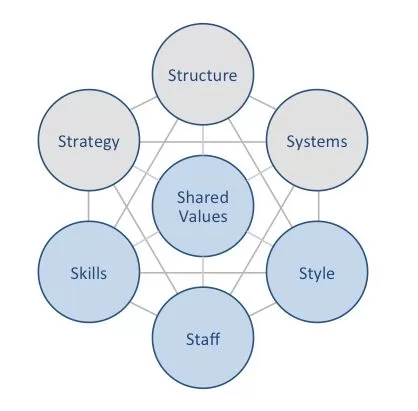
WeWork McKinsey 7S model highlights the ways in which seven elements of businesses can be aligned to increase effectiveness. According to this model strategy, structure and systems represent hard elements, whereas shared values, skills, style and staff are soft elements. McKinsey 7S model stresses there are strong links between elements in a way that a change in one element causes changes in others. As it is illustrated in figure below, shared values are placed at the core of WeWork McKinsey 7S model, because shared values guide employee behaviour with implications on their performance. Hard Elements in WeWork McKinsey 7S Model Strategy. WeWork pursues simplification business strategy. Specifically, co-working giant simplifies the notion of flexible workspace and makes it practical for businesses of all sizes through offering space as service. Furthermore, the company is on the path of digitalizing real estate business on the global scale. Structure. Under the leadership of co-founder and former CEO Adam Neumann WeWork organizational structure was chaotic and ineffective. The current CEO Sandeep Mathrani restructured the company to a great extend to make it more simple and transparent. Currently, global flexible workspace provider has an hierarchical organizational structure. Systems. The workspace provider relies on a wide range of systems for its daily operations. These include employee recruitment and selection, team development and orientation, transaction processing systems. Furthermore, customer relationship management, business intelligence, knowledge management systems are also important for WeWork. WeWork Inc. Report contains a full analysis of WeWork McKinsey 7S Model. The report illustrates the application of the major analytical strategic frameworks in business studies such as SWOT, PESTEL, Porter’s Five Forces, Ansoff Matrix and Value Chain analysis on WeWork. Moreover, the report contains analyses of WeWork leadership, business strategy organizational structure and organizational culture. The report also comprises discussions of WeWork marketing strategy, ecosystem…
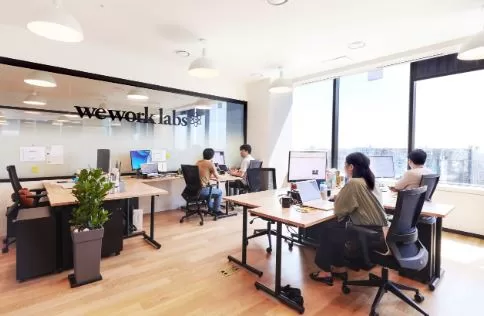
Co-founder and former CEO Adam Neumann had a compelling vision for WeWork ecosystem. It has been noted that “Neumann has even expressed a desire to one day have entire WeWork communities, where everything from your apartment to the school your children attend is brought to you by WeWork”[1] The main components of the ecosystem as envisioned by Neumann include the following: WeGrow private school. The curriculum featuring ‘conscious entrepreneurship’, the school was actually the brand child of Adam Neumann’s wife Rebecah. WeGrow school closed only a year later after enrolling around 100 children in 2018 for the tuition cost of up to USD 42k.[2] WeMrkt physical store. Opened in 2010, WeMrkt physical store offered products such as Icelandic yogurt and chickpea snacks sourced from WeWork member companies. Powered by We. A range of services that transform data to design. These services include helping clients find the right physical space, construction, custom office decor, software to manage building operations, back-end data on the efficiency of the office space, and even WeWork employees physically on-site to help with community programs.[3] HQ by WeWork. Private and personalized headquarters for medium sized businesses. WeWork Labs. An initiative to assist early-stage start-ups with growth through education, mentorship, and an agile workspace. The program was shut down in 2022. Rise by We. A premium fitness concept presented as an ultimate wellness club. WeLive. Furnished, community-oriented shared living apartment suite rentals, offering amenities in select US metropolitan areas. Almost all of the initiatives listed above that were planned as important components as WeWork ecosystem have failed. However, it is important to note that in most cases the failure may not be an indication of flaw of respective ideas. Rather, the failure of these initiatives can be attributed to the following main two reasons: 1. Poor leadership. It is now…

WeWork PESTEL analysis is a strategic analytical tool and the acronym stands for political, economic, social, technological, environmental and legal factors affecting the global flexible workspace provider. Political Factors in WeWork PESTEL Analysis Political factors that can affect workspace providers such as WeWork are multiple and include government stability, tax policies, lobbying and level of bureaucracy. Co-working providers are also affected by corruption, freedom of press, activities of trade unions and other factors. Government stability Government stability plays an important role on the long-term growth prospects of WeWork. The global flexible workspace provider operates 756 locations in 38 countries[1]. Changes in government policies may impact WeWork’s ability to secure office space, enter in lease agreements and manage its workforce. Furthermore, government instability or war such us the one currently going on in Ukraine can result in the loss of WeWork properties with direct implications on the bottom line. Tax Policies WeWork is subject to tax policies in all 38 countries it operates. The co-working giant is directly affected by corporate taxes. The higher the corporate taxes, the higher is the cost of doing business in any particular region. Moreover, favourable treatment of leases in some countries increases the company’s profitability, considering that the workspace provider leases the majority of its locations. Despite its huge size, in the past WeWork had benefited from tax breaks intended for small businesses. Specifically, by 2019 the company had received about GBP 2 million tax refund on property taxes it had paid in UK.[2] Lobbying Lobbying can affect the performance and growth prospects of the global flexible workspace provider. It is an attempt by individuals or organizations to influence government decisions. Potentially lobbying can benefit co-working and flexible working sector through tax befits for leasing arrangements and providing other benefits…
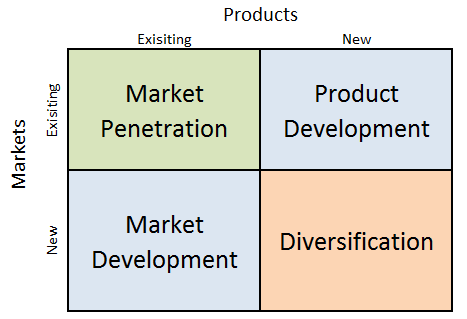
WeWork Ansoff Matrix is a marketing planning model that helps co-working and office space operator to determine its product and market strategy. Ansoff Matrix illustrates four different strategy options available for businesses. These are market penetration, product development, market development and diversification. WeWork Ansoff Growth Matrix Within the scope of Ansoff Matrix, WeWork uses all four growth strategies in an integrated manner: 1. Market penetration. Market penetration refers to selling existing products to existing markets. WeWork engages in market penetration strategy extensively. The global flexible workspace provider uses print and media marketing in general and social media marketing in particular to increase its penetration into the market. 2. Product development. This involves developing new products to sell to existing markets. WeWork engages in new product development rarely. WeWork Workplace software for landlords for online booking of desks, offices, collaboration hubs, and meeting rooms is one of the very few noteworthy cases of new product development by the co-working giant. 3. Market development. Market development strategy is associated with finding new markets for existing products. New market development is one of the main growth strategies for WeWork. Starting only with one location in Manhattan, USA in 2011, the workspace provider has expanded to a network of 756 locations in 38 countries, including 277 locations in the US as of December 2021. 4. Diversification. Diversification involves developing new products to sell to new markets and this is considered to be the riskiest strategy. WeWork does not engage in diversification business strategy, but it may do so in the future. WeWork Inc. Report contains the above analysis of WeWork Ansoff Matrix. The report illustrates the application of the major analytical strategic frameworks in business studies such as SWOT, PESTEL, Porter’s Five Forces, Value Chain analysis and McKinsey 7S Model on WeWork. Moreover,…

A documentary released by Hulu on April 1st 2021 provides an insight on WeWork organizational culture and its serious shortcomings under the leadership of co-founder and former CEO Adam Neumann. At that time corporate culture at WeWork was notorious for ‘frat-boy’ culture, sexual abuse, motivational mantras and free beer. The co-working giant organized annual employee retreat on a remote island. The company engaged in tracking employees at mandatory, alcohol-fuelled company events and an onboarding process that made all new employees shout WeWork until red in the face. New CEO, real estate veteran Sandeep Mathrani who took helm in February 2020 brought maturity and discipline into the company with direct implications on organizational culture of WeWork. Dubbed as ‘anti-Adam Neumann’ the new CEO was quick to put a stop at extravagant company events and cut costs in many other ways. Under the new leadership the global flexible workspace provider has committed to zero tolerance to discrimination and abuse at workplace in any form and these changes are more than welcomed by stakeholders. Mr. Mathrani is committed to change the important components of WeWork organizational culture in the following ways: Values. Mathrani specified the following values to be central for the co-working and office space operator: Do the right thing Strive to be better, together Be entrepreneurial Give gratitude Be human, be kind Attitudes. New CEO expects mature and more responsible attitude towards the work from employees at all levels. Norms and expectations. Employees are expected to work hard, deliver results and be considerate towards their co-workers. Discrimination and abuse is no longer tolerated at the co-working giant. Rituals, symbols and routines. Extravagant rituals such as shouting WeWork at company gatherings, ordering coffee from WeWork’s in-house barista and many others popular under Adam Neumann were put to stop permanently. WeWork…
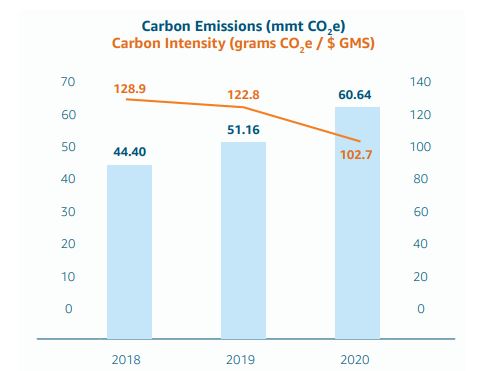
Since Amazon went public in 1997, the e-commerce giant has been repeatedly criticized for its lack of commitment on corporate social responsibility aspect of the business. Moreover, Amazon’s first sustainability executive Kara Hartnett Hurst was appointed only in August 2014 , a stark proof that CSR aspect of the business has not been paid due attention to for a long period of time. CSR Programs and Initiatives Amazon Supporting Local Communities In 2020, the e-commerce giant created the Amazon Relief Fund, with a USD25 million initial contribution, focused on supporting its independent delivery service partners and other stakeholders to deal with the negative impact of coronavirus developments on the business. Amazon’s Device Donation Program facilitates the donation of electronic devices and gift cards to schools located near Amazon fulfilment centres throughout the US The company hosts ‘Girls Who Code’ events occasionally to help get more girls interested in coding The e-commerce giant supports local and national nonprofits with cash and product donations. Amazon Educating and Empowering Workers Amazon Career Choice Program pre-pays 95% of tuition for employees to take courses for in-demand fields, such as airplane mechanic or nursing, regardless of whether the skills are relevant to a career at Amazon. Up to date the program has been attended by more than 10000 employees worldwide. Amazon Virtual Contact Centre, allows Amazon’s customer service employees to work from home. The program “Pay to Quit” offers USD 5000 to warehouse workers who quit to encourage employees to take a moment and think about what they really want.[1] Upskilling 2025 is USD 1,2 billion investment project to provide free skills training to U.S. employees. Employee Health and Safety at Amazon Amazon employs 6200 safety professionals worldwide In 2020 due to the risk of COVID-19 coronavirus, the company recommended all of global…
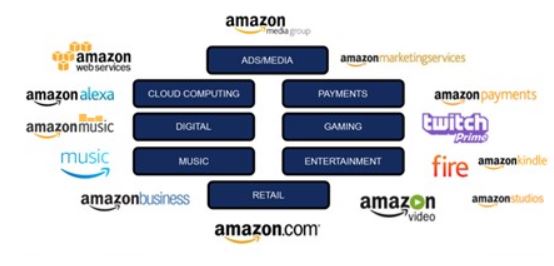
Amazon ecosystem of products and services is vast and it comprises retail, transportation, B2B distribution, payments, entertainment, cloud computing, and other segments. Started only as an online bookstore in 1995 by Jeff Bezos, Amazon has become the e-commerce and cloud computing tech giant consistently increasing the ecosystem of its products and services. The e-commerce giant is competent in focusing on what customers need, designing in-house innovative technology solutions and then commercialising these solutions. Amazon Web Services (AWS) is a stark example for this. This is how Amazon ecosystem has evolved. Increasing range of products and services Today, Amazon is a “retailer, a technology company, an entertainment destination, a growing advertising platform, even a delivery company with its own fleet of planes”.[1] Importantly, consumption of one type of Amazon products and services encourages the usage of other products and services offered by the company and that is the primary aim of developing an ecosystem. This can be illustrated using Alexa virtual assistant as an example. Amazon smart security camera that is compatible with the Echo smart speakers allows users to stream live video from the camera on the Echo Show or through the Alexa smartphone app. Moreover, Amazon smart glass is based on Alexa voice assistant and can be used only if the device is linked to a user’s smartphone.[2] Figure 1 below illustrates the essence of Amazon ecosystem. Figure 1 Amazon Ecosystem[3] Each of Amazon business segment illustrated in Figure 1 above plays certain role in consumption of other types of products and services belonging to the ecosystem. Let’s take Amazon Kindle for example. As it is illustrated in Figure 2 below, Amazon Fire platform can be used to consume a wide range of products and services belonging to Amazon portfolio. Moreover, Fire platform can also be used…
